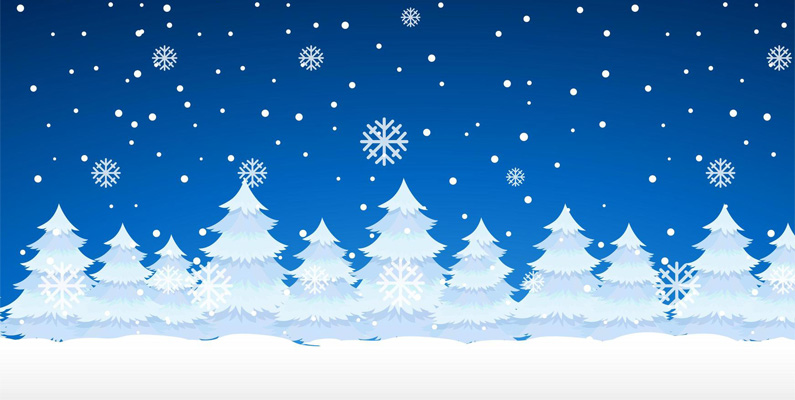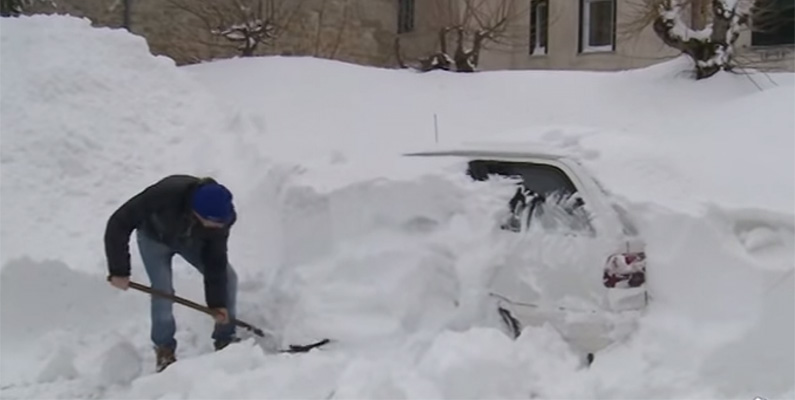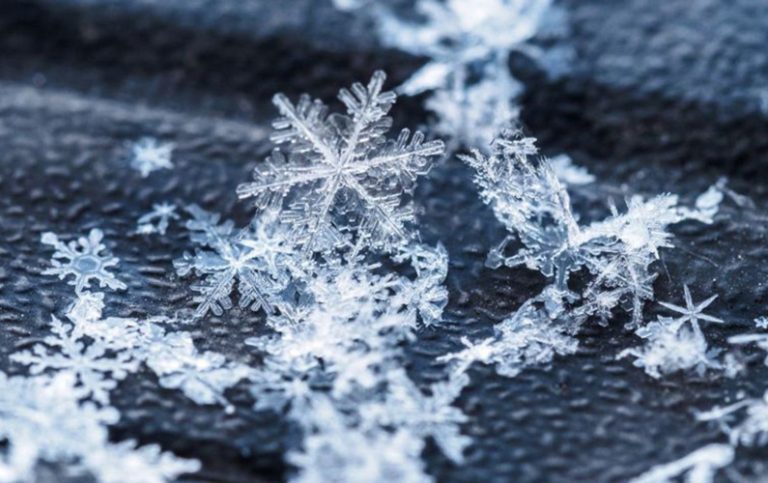Snow is precipitation in the form of ice crystals—individual or fused—that fall from a cloud. It can also refer to snow that is on the ground. But how much do you really know about the white ice crystal? Here are ten facts that every Nordic should know about snow!
 To clarify: snow is not white…
To clarify: snow is not white…
Most dream of a white Christmas, that is, a snowy Christmas, even though the term isn’t strictly correct. Snow is actually not white but rather transparent. It’s the light reflecting from it that makes it appear white, with the many facets of the snowflake scattering light in various directions, and even dispersing the entire spectrum of colors. We sincerely hope that your world wasn’t turned completely upside down just now! [source]
 Snow can also appear in blue, red, and pink…
Snow can also appear in blue, red, and pink…
When Elvis Presley sang about having a “Blue Christmas,” he could have been almost literal. Snow can appear blue to the naked eye for the same reasons that make it seem white. However, in cases where light penetrates deeper into the snow, more red light can be absorbed than blue light. In polar and alpine regions containing algae with red pigment, snow can take on a pinkish appearance. Below is a picture taken in Antarctica, where the snow appears red. [source]

 Temperature plays a significant role in the structure and appearance of snowflakes…
Temperature plays a significant role in the structure and appearance of snowflakes…
One of the decisive factors in the shape of individual snowflakes is the air temperature around them. The study of flakes has identified that long, thin, needle-like ice crystals form at around -2°C, while a lower temperature of -5°C leads to flat, plate-like crystals. Further temperature changes as the snowflake falls determine the six arms or dendritic structure of the crystal. [source]
 It’s a myth that it can’t snow above freezing…
It’s a myth that it can’t snow above freezing…
Snow can sometimes fall even when temperatures exceed zero degrees Celsius at ground level, limited by relative humidity. In high humidity, precipitation falls as rain when the temperature rises above zero or a few degrees above zero. However, with lower humidity, it can still snow even when it’s several degrees above freezing in the air. This is very common in Nordic countries, especially during the transition from winter to spring. [source]

 The world’s largest snowflake was over 38 centimeters wide…
The world’s largest snowflake was over 38 centimeters wide…
Although supporting evidence is limited, the Guinness World Records lists the largest snowflake from a storm in January 1887 in Fort Keogh, Montana, USA. The snowflake was over 38 centimeters (15 inches) wide and 20 centimeters (7.8 inches) thick, described by the farmer who saw it as “larger than his milk pans.” Talk about the cloud practically delivering a fully-formed snowman! [source]
 Snowfall varies greatly in Sweden…
Snowfall varies greatly in Sweden…
In Sweden, from 1961 to 1990, on average, about 10% of annual precipitation fell as snow in the southernmost regions. Meanwhile, over 40% of annual precipitation was snow in most of northern Sweden. [source]
 2.5 meters of snow in 18 hours…
2.5 meters of snow in 18 hours…
The small village of Capracotta in southern Italy reported receiving about 250 centimeters (8.2 feet) of snowfall within 18 hours on March 5, 2015. What may be even more incredible is that Capracotta is not even located in the Alps but in southern Italy. Nevertheless, the village has long been known for receiving massive one-day snowfalls. The village is home to only about 1,000 residents. The picture below shows what it looked like on March 5, 2015. [source]

 But the world record for snowfall is held by Washington, USA…
But the world record for snowfall is held by Washington, USA…
The Mount Baker ski area in Washington, USA, holds the world record for snowfall with 2,895.6 centimeters (95 feet) of snow during the 1998/1999 winter season. You can imagine how thrilled all the skiers were that season! [source]
 80% of all freshwater is frozen as ice or snow…
80% of all freshwater is frozen as ice or snow…
In total, freshwater accounts for only about 2.5% of all the water on our planet. Approximately 80% of all freshwater is frozen as ice or snow. This equates to about 12% of the Earth’s surface. [source]

 The world’s first close-up photograph of a snowflake was taken in 1885…
The world’s first close-up photograph of a snowflake was taken in 1885…
The first person to take a photograph of a snowflake was a farmer from the small town of Jericho in Vermont, USA. After years of experimenting with attaching microscopes to a bellows camera in 1885, Wilson Bentley succeeded in capturing the first photograph of a snowflake ever. During his lifetime, he photographed more than 5,000 snowflakes and even released a book with 2,400 images of—you guessed it—snowflakes. [source]

